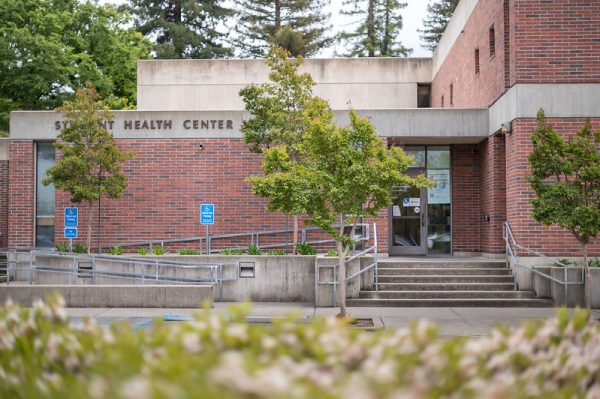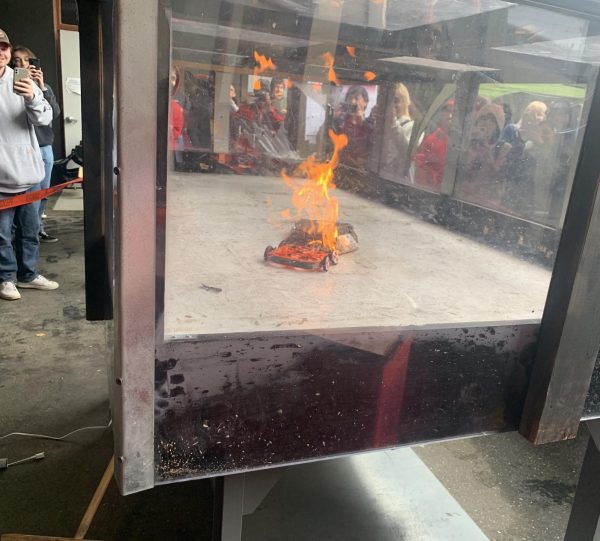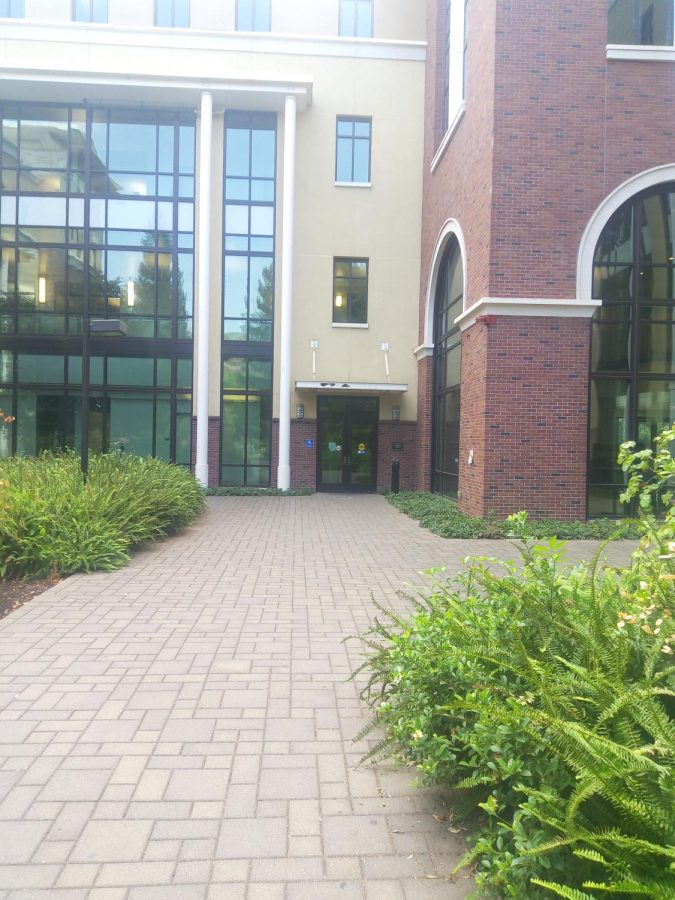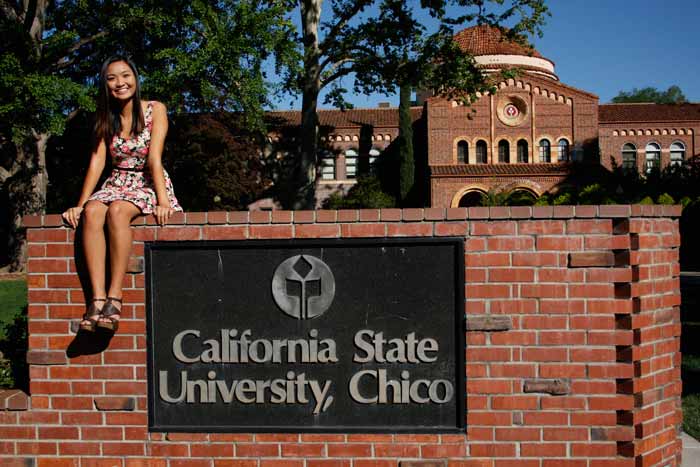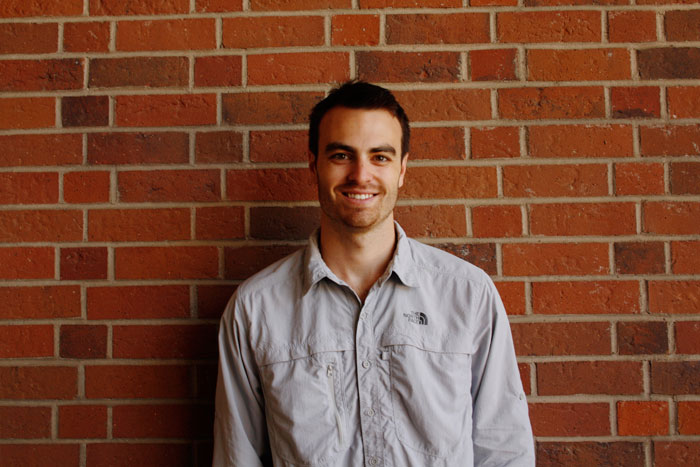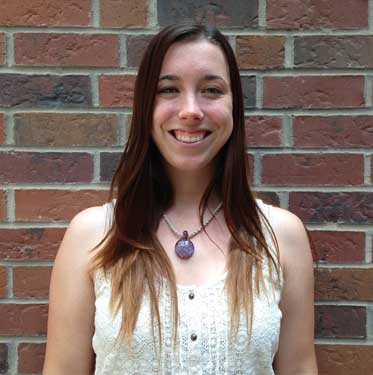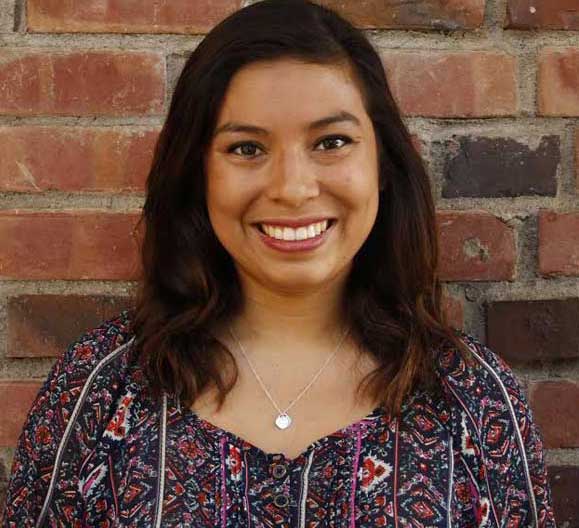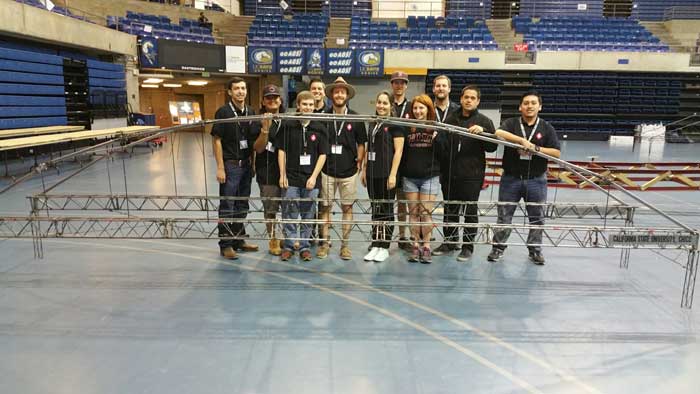Published 2003-04-30T00:00:00Z”/>
Joe Minissale<br>Senior Writer
Students walking by Tehama Hall 126 can catch whiffs of garlic, making them want to skip classes and follow their noses.
But the aroma is coming from students preparing food – and tasting it – for credit.
Each week, students of the “Cultural Food” class, Nutrition and Food Science 224, take a three-hour lecture and a two-hour lab where they make meals from scratch.
“We go through the world in one semester,” said Professor Faye Johnson.
Each lab focuses on the foods of a particular nation. A native from that land comes to the lab as a guest speaker. The students prepare the dishes and when all the food is displayed, the guest speaker critiques the meal, sharing background on nutrition in that area.
Johnson said the class is a capstone course, or final course in the nutrition and food sciences major. She said students pay a $25 lab fee for the ingredients, which doesn’t cover all the costs, and the department pays the rest.
“We are using food like chemistry uses chemicals,” she said. “This is putting it all together – all those factors that go into making a food for a culture.”
During a recent Thursday lab, the focus was Mexican food. Students clad in white coats were divided into sections. Each section has ovens and burners to work with, as well as a cart of spices, canned beans and oils.
“This is where we grab all the produce,” said Damon Collazo, who is preparing tortilla soup. “There’s too much to ration out, so each unit grabs what they need.”
Collazo sliced moist uncooked chicken on the cutting board and grated some cheese into a bowl with crumbled-up tortilla chips.
“This is a little improv,” he said. “It’s pretty basic. Recipes are only a guideline. A good chef will add his own signature to a dish.”
As the students worked, they made small talk about sports to lighten the atmosphere. Collazo said they often help each other out because some dishes take longer to prepare than others.
Student Jenni Dye said she hopes to become a dietician. She is taking this course to learn about different cultures, like the Hmong, who, she said, don’t like to be touched on the head.
“This class makes it so we can respect everyone’s culture,” Dye said.
Joelle Chinnock made dough out of corn flour, placed it inside a wooden block and mashed it down. The result: a perfect tortilla. She also made rice pudding with lemon, cinnamon and cherry.
“See how much fun we have?” she said.
By Chinnock’s side, Suzanne Fenton rolled dough into balls over flour. After deep-frying them, she dipped them into a bag of cinnamon and sugar.
“They’re going to be sweet because I put half the salt and twice the sugar,” Fenton said. “I’m guessing they’re like doughnuts.”
She said she is taking this class to learn how to relate to different cultures.
“We need to know what certain cultures are sensitive to,” she said. “And also what nutritional deficiencies that cultures have.”
Fenton spilled some flour on her shirt. She grabbed a handful of flour and smiled.
“I always say, ‘We wouldn’t be doing a good job if we weren’t making a mess,'” she said.
Student Angela Duffy crafted a Christmas Eve salad, slicing bananas and oranges while mixing peanuts and vinegar into a bowl of lettuce. Duffy, who said this is the most cooking she’s ever done, also prepared chicken quesadillas.
“Hey Mr. Garnish man,” Duffy said to Dino Correa. “Garnish my quesadillas.”
Correa sliced a lemon and squeezed the juice onto Duffy’s quesadilla. He returned to his own work: chicken mole.
“Let me get this thing looking kind of edible,” he said, stirring the sauce. “This is just some semi-sweet chocolate, a slice of bread and tomato sauce. The water is from the broth I baked. And the aromas are from the garlic I sauteed.”
Correa said this course is helping him become more aware of health problems in other areas. He said he might seek a career as a dietary counselor, where he may have to recommend certain foods to people with nutritional deficiencies.
Also slaving over the stove to prepare chicken is Afram Kirmiz.
“It’s just chicken and some chili sauce,” he said. “You just stew the chicken prior, to get it soft, stir, and then wrap it into tamales.”
Beside him, a tray of empty white glasses waited to be filled with Mexican hot chocolate. Lizzy Vance held a round chunk of chocolate.
“You just put it into the blender with four cups of milk, add a little bit of sugar and you blend it up,” she said.
Vance said the course is great, but the only drawback is that students often have to stay until after the class period is over to wash dishes.
All the aromas blended.
The chefs scrubbed the preparation dishes, spoons and countertops as they worked. One of the chefs, Kelley Marty, tasted a spoonful of lemonade, made a sour face, and went to the sugar bucket, mixing in three spoonfuls. She said everyone wore bright hula necklaces in honor of her 23rd birthday.
The cocoa was poured into cups. The students remove their white coats, grab wooden serving bowls and brought the meals to the serving room.
After the classmates sang happy birthday to Marty, guest speaker Tracy Berman discussed Mexican culture. She said that Mexicans use all parts of an animal when cooking, and that Mexicans especially love to eat pastries.
Suzanne Fenton told the class about an article she read, about how diet is different in Mexico than in the United States.
“Americans are fat, and people who move here get fat too,” she said.
Professor Faye Johnson said Americans often prefer to get fast food, rather than slice and dice their own meals. She said that contributes to obesity.
“You know what? It doesn’t take any time at all to prepare food,” she said. “How long does it take to put a chicken breast in the oven?”
After the dialogue, they filled their plates with enchiladas, tamales, quesadillas, rice pudding and bunuelos (churros). They washed it down with Mexican hot chocolate and lemonade.
“They did a great job,” said Berman, whose grandfather and grandmother were from Mexico – Puebla and Ensenada respectively.
Berman, a professor of nutrition and fitness at Chico State, took the same class last spring.
“It’s an excellent class,” she said.<em>Joe Minissale can be reached at <a href= “mailto:[email protected]”>[email protected]</a></em>
